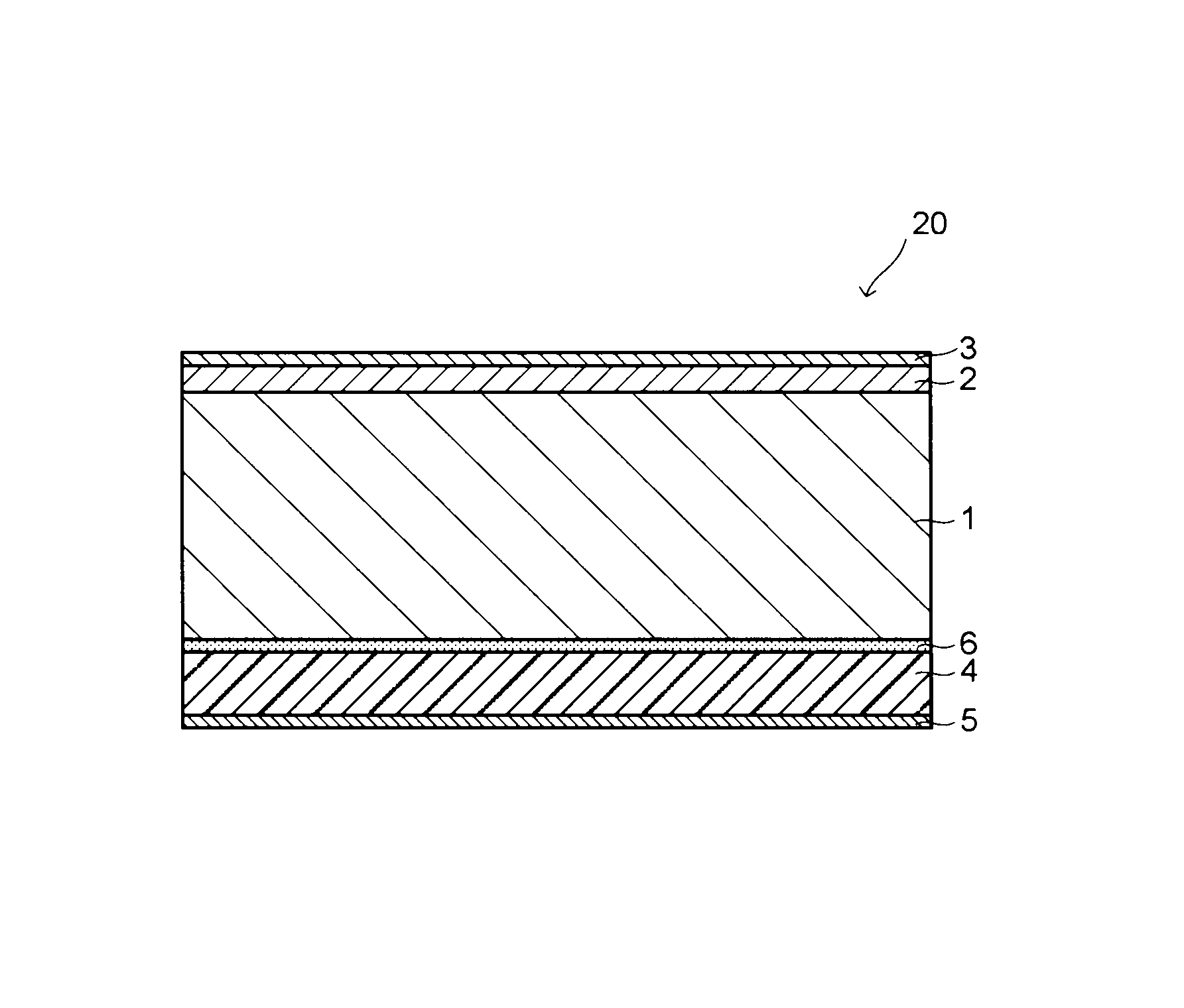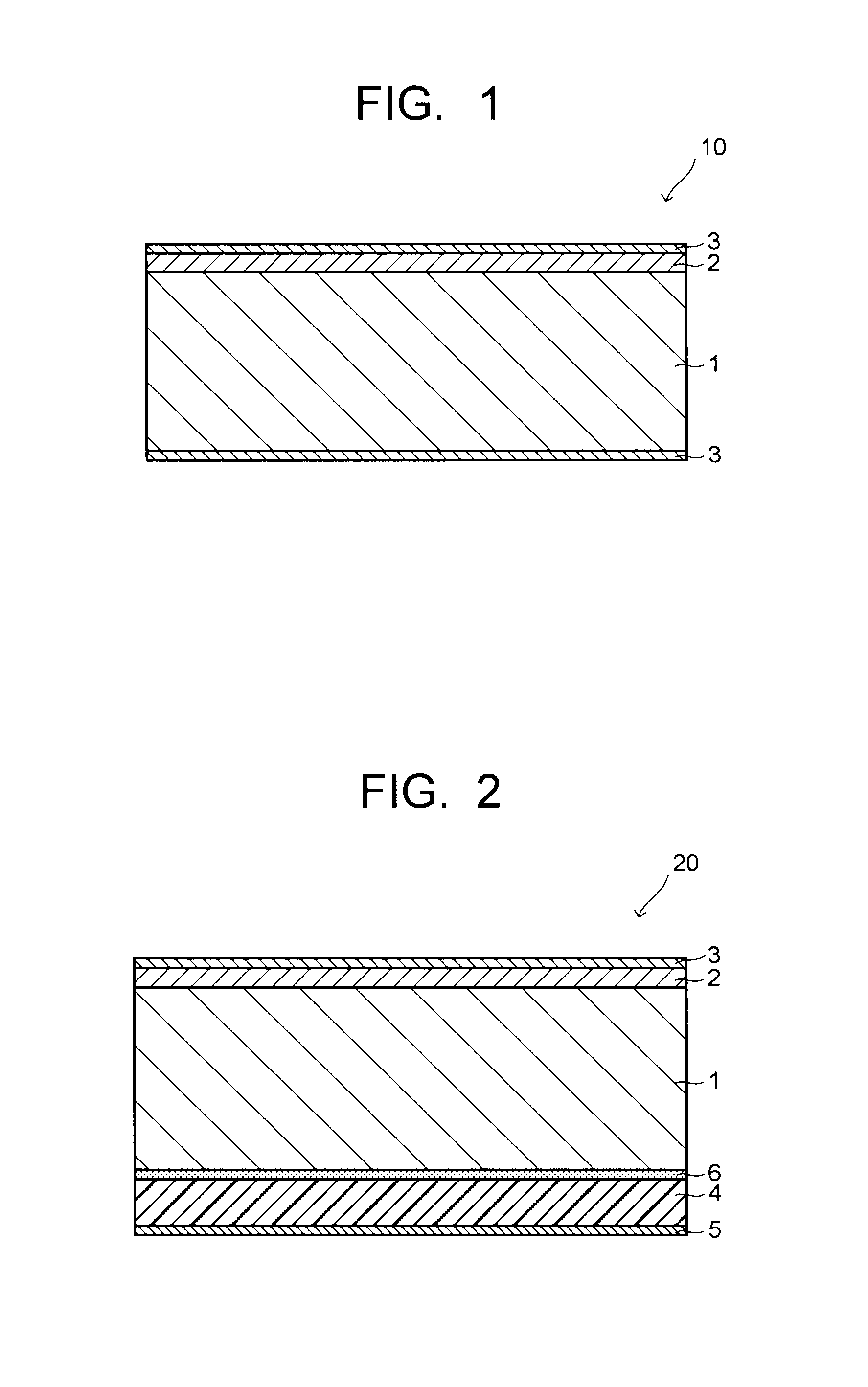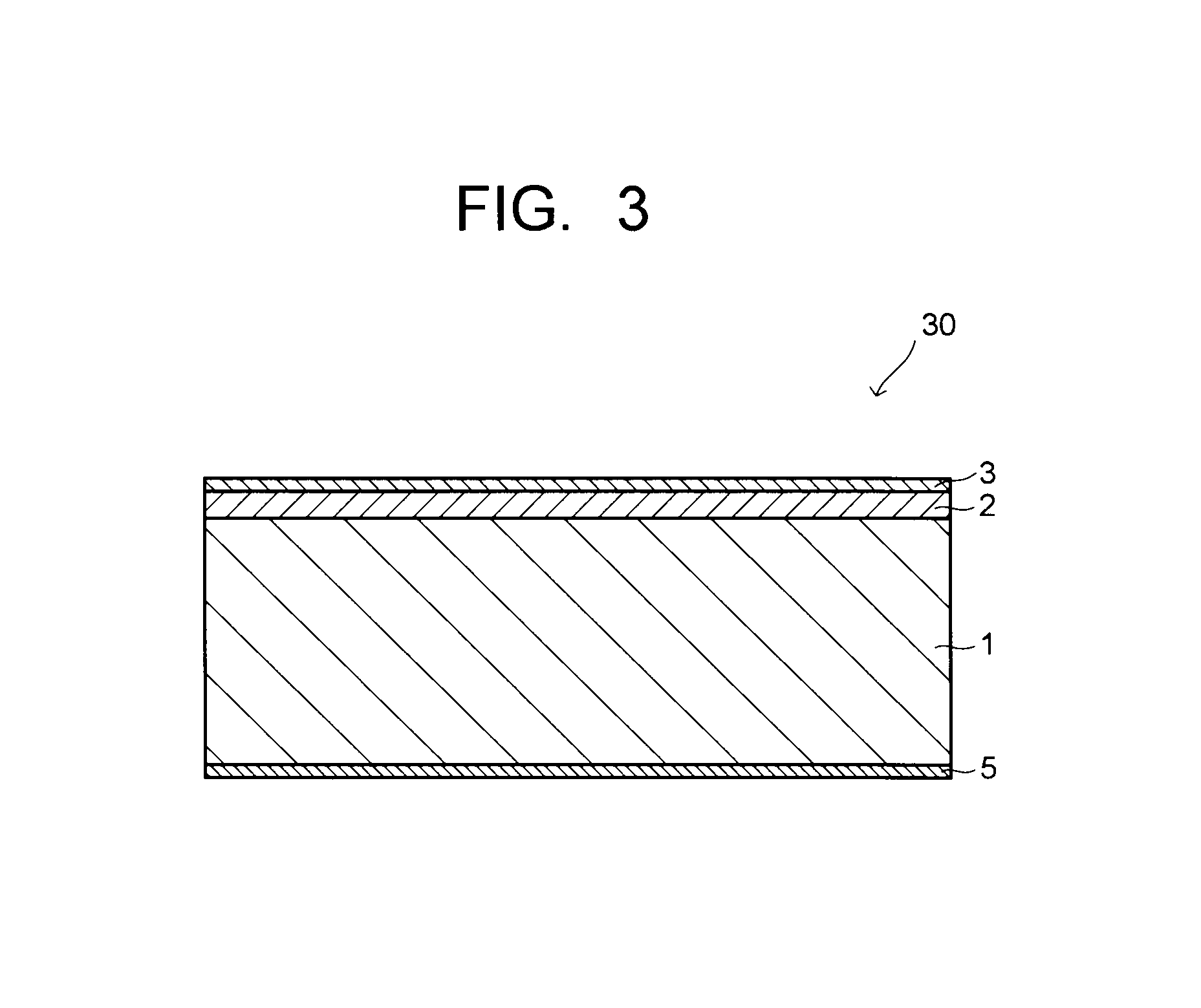Infrared transmission filter and imaging device
a technology of infrared transmission filter and imaging device, which is applied in the direction of lighting and heating apparatus, instruments, radioation controlled devices, etc., can solve the problems of cut-off characteristics, inability to meet the requirements of a size reduction application, and inability to adjust the angle of incident, etc., to achieve excellent optical characteristics, insufficient size and thinness, excellent infrared permselectivity
- Summary
- Abstract
- Description
- Claims
- Application Information
AI Technical Summary
Benefits of technology
Problems solved by technology
Method used
Image
Examples
first embodiment
[0047]FIG. 1 is a schematic cross-sectional view showing a portion of the IR transmission filter according to a first embodiment of the present invention. As shown in FIG. 1, the IR transmission filter 10 according to this embodiment includes an IR transmission base material 1, an S-IR absorbing film 2 formed on one side of the IR transmission base material and containing an nIR absorbent, and an antireflection film 3 formed on each of the other side of the IR transmission base material and the side of the S-IR absorbing film remote from the IR transmission base material.
[0048]The IR transmission base material 1 is constituted by a transparent resin containing a visual light absorbent, which absorbs light in a visible wavelength range. The wording “transparent resin” refers to a synthetic resin, which transmits at least light in an IR wavelength region. The transparent resin may be, for example, an acrylic resin, a styrene resin, an ABS resin, an AS resin, a polycarbonate resin, a p...
second embodiment
[0072]FIG. 2 is a schematic cross-sectional view showing a portion of the IR transmission filter according to a second embodiment of the present invention. In order to avoid duplicate explanation with respect to this embodiment and its subsequent embodiments, explanation of the features common to the first embodiment will be omitted, and the different features will be mainly described.
[0073]As shown in FIG. 2, in the IR transmission filter 20 according to the second embodiment, a glass base material 4, which has an L-IR reflection film 5 of a multilayer dielectric film formed on one side, is bonded through an adhesive 6, to one side of an IR transmission base material 1 (a side opposite to a side with an S-IR absorbing film 2 being formed thereon) such that the L-IR reflection film 5 faces outward.
[0074]The L-IR reflection film 5 is a film, which has a function of reflecting and cutting off light on a long wavelength side of the transmission wavelength band, such as a film wherein t...
third embodiment
[0083]FIG. 4 is a schematic cross-sectional view showing the IR transmission filter according to a third embodiment of the present invention.
[0084]As shown in FIG. 4, in the IR transmission filter 40 according to the third embodiment, a glass base material 4, which has an S-IR reflection film 7 of a multilayer dielectric film formed on one side, is bonded, through an adhesive 6, to the other side of the IR transmission base material 1 (side opposite to a side with an S-IR absorbing film 2 being formed thereon) such that the S-IR reflection film 7 faces outward.
[0085]The S-IR reflection film 7 is configured to reduce incident angle dependence, sacrificing a cut-off effect to light in a visible light range of a usual visible light reflection film as described later, and the reflection wavelength band to light vertically entering ranges 730 to 810 nm, for example. The S-IR reflection film 7 may be formed by alternating layering low refractive index dielectric layers and high refractive...
PUM
 Login to View More
Login to View More Abstract
Description
Claims
Application Information
 Login to View More
Login to View More - R&D
- Intellectual Property
- Life Sciences
- Materials
- Tech Scout
- Unparalleled Data Quality
- Higher Quality Content
- 60% Fewer Hallucinations
Browse by: Latest US Patents, China's latest patents, Technical Efficacy Thesaurus, Application Domain, Technology Topic, Popular Technical Reports.
© 2025 PatSnap. All rights reserved.Legal|Privacy policy|Modern Slavery Act Transparency Statement|Sitemap|About US| Contact US: help@patsnap.com



